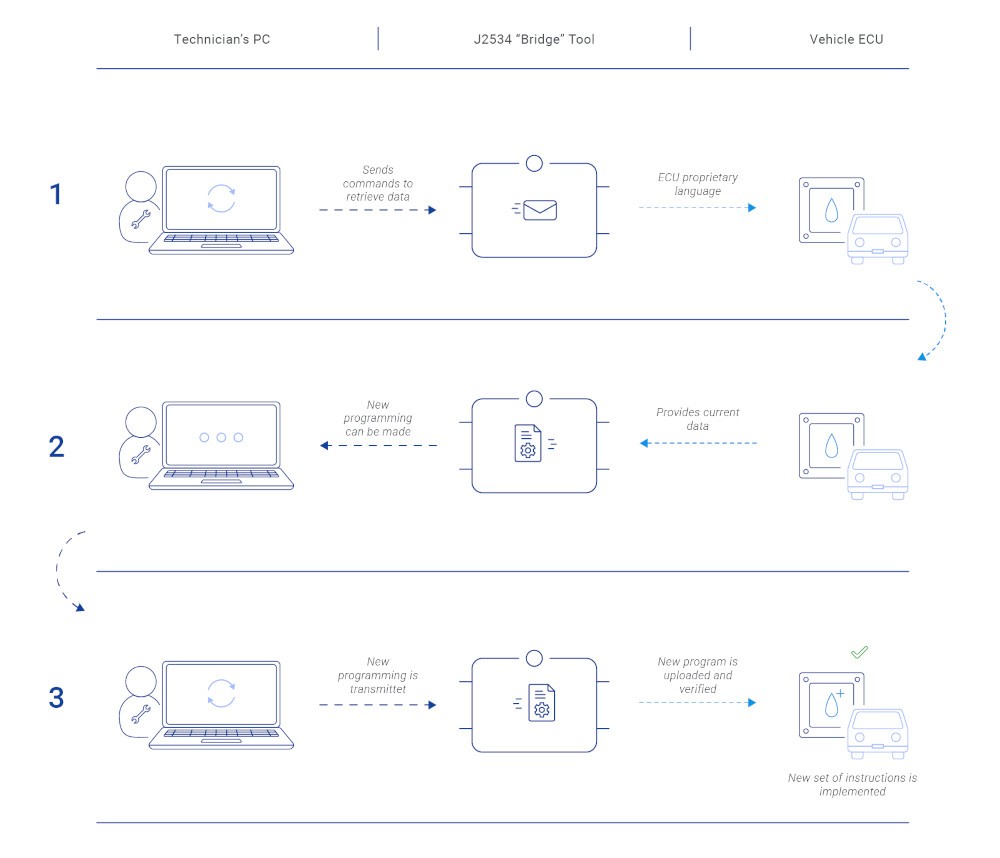J2534 Devices are revolutionizing the automotive industry, providing a standardized interface for vehicle diagnostics and reprogramming. This comprehensive guide delves into the intricacies of J2534 devices, exploring their functionality, benefits, applications, and challenges.
What are J2534 Devices?
J2534 devices, adhering to the SAE J2534 standard, are pass-thru devices that enable communication between a vehicle’s electronic control units (ECUs) and diagnostic or reprogramming software on a computer. This universal interface allows independent repair shops and technicians to diagnose and reprogram various vehicle makes and models without needing manufacturer-specific tools. This standard fosters compatibility, cost savings, enhanced diagnostics, and supports the Right to Repair movement.
J2534-1 vs. J2534-2: Understanding the Differences
- J2534-1: This initial version provided basic diagnostics and ECU reprogramming capabilities.
- J2534-2: This enhanced version offers broader protocol support, faster reprogramming speeds, and more advanced functionalities.
How J2534 Devices Work
J2534 devices act as a translator between the diagnostic software and the vehicle’s ECUs. The process involves a J2534 pass-thru device connected to the vehicle’s OBD-II port and J2534 software running on a computer.
The J2534 Communication Process:
-
Connection: The J2534 device connects to the vehicle’s OBD-II port.
-
Communication Initialization: The J2534 software initiates communication with the vehicle’s ECUs.
-
Diagnostic Trouble Code (DTC) Reading: The software reads and displays DTCs, indicating potential issues.
-
ECU Reprogramming: The software uploads new firmware or calibration files to the ECUs.
| Diagnostic Software | J2534 Pass-Thru Device | Vehicle ECU | Result |
|---|---|---|---|
| Sends command | Interprets command | – | – |
| – | Translates command | – | – |
| – | Sends translated command | Processes command | – |
| – | – | Responds | – |
| – | Translates response | – | – |
| Receives response | – | – | User accesses data |



Practical Applications of J2534 Devices
J2534 devices find wide-ranging applications in diverse automotive scenarios:
- Diagnostics: Reading and clearing DTCs, identifying malfunctions.
- ECU Reprogramming: Updating software, addressing recalls, enhancing performance.
- Live Data Monitoring: Observing real-time sensor data, analyzing vehicle performance.
Real-World Use Cases:
-
Independent Repair Shops: Servicing diverse vehicle brands with a single tool.
-
Dealerships: Performing software updates and recall-related reprogramming.
-
Fleet Maintenance: Ensuring optimal performance and minimizing downtime for large vehicle fleets.
Challenges and Considerations when Using J2534 Devices
While powerful, J2534 devices present certain challenges:
-
Compatibility Issues: Not all vehicles fully support J2534. Verify compatibility before use.
-
Complexity: Effective use requires technical knowledge and training.
-
Software Updates: Regularly update J2534 software and firmware for optimal performance.
Addressing these challenges involves thorough research, investing in quality tools, continuous learning, and adhering to manufacturer guidelines.
Conclusion
J2534 devices empower automotive professionals with a versatile and standardized solution for diagnostics and reprogramming. Understanding their capabilities and limitations is crucial for successful implementation. By embracing J2534 technology, the automotive industry can enhance efficiency, reduce costs, and improve vehicle performance.
